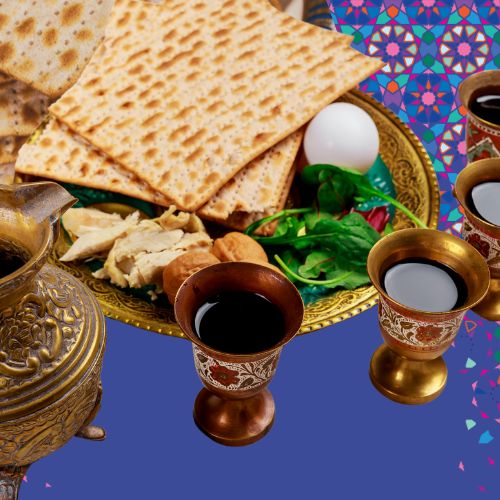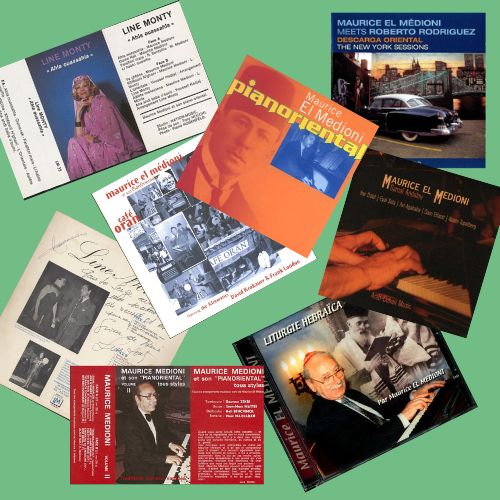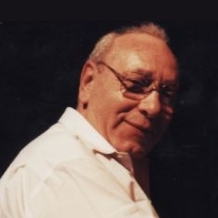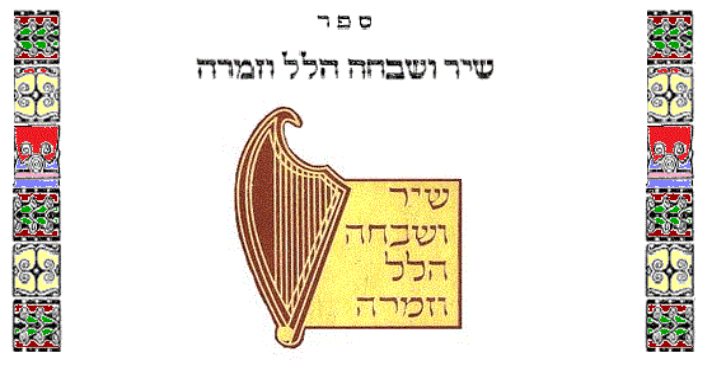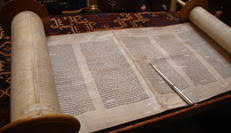
by Hervé Roten
A Jewish story tells that when two Jews speak together, there are at least three different opinions ! In the same way, when we talk of “Jewish musical traditions”, it is good to speak of it in the plural form as the multiplicity and variety are the master words of this universe. There exist in the world over a hundred different Jewish musical traditions.
France itself numbers around twenty of these traditions. They can be gathered into three big Jewish families living today on the French soil :
– The Sefardi (expelled from the Iberian peninsula in 1492 and 1497)
– The Ashkenazi (native of Eastern Europe and Alsace – Lorraine)
– The Jews from North Africa (by far the majority). The latter qualify themselves, often wrongly, as Sefardi.
The French community represents about 600 000 people. It is however far from being homogeneous; each of these three groups compound a plethora of sub-groups of different origins, and have each one of them their proper musical tradition.
This patchwork of communities gave birth to a musical practice inside a liturgical or communal context.
Liturgical music represents the majority of Jewish musical performance. The singing, omnipresent in the synagogue or at home, rhythms the worshipper’s life. A religious Jew goes three times a day to the synagogue, to recite the tunes learned from his fathers according to the oral tradition. Jewish holidays brings a musical blooming more or less marked according to their signification and their importance in the liturgical calendar.
Since the fall of the Temple (70 A.D.), the music instruments are in theory forbidden inside the synagogue (except for the Shofar : a ram’s horn in which we blow during the holidays of the new year and Yom Kippur). However the Ashkenazi use sometimes – since the second half of the 19th century – the organ to accompany the singing, outside of the periods of prohibition of Shabbat and high holidays.
The actors and keepers of this musical tradition are : the cantor (hazzan), the Rabbi and the worshippers who play actively a part in the services, because the singing takes often a responsorial form. Among these worshippers, let’s note the importance of the “Ba°ale massore” (literaly : holder of the tradition). That learned man, who knows by memory the tradition, is the guarantor of the good following of the rites and tunes sang in the synagogue. Let’s notice that these traditions, mainly oral at the origin, go together since the second half of the 19th century with a written tradition, composed of transcriptions of existing prayers, and new tunes created for various liturgical events of the Jewish year.
Each synagogue has its own musical rite. It depends on the location of the synagogue, the practice of secular traditions and the origins of the majority of the worshippers. Thus in a homogeneous community, formed exclusevely by Tunisian Jews, the prayers are sang following the Tunisian rite. In the great synagogue of la Victoire in Paris, the rite is mainly Ashkenazi, but the tunes come in majority from the consistorial period … so quite distant of a Polish or Russian rite for example. Certain communities – particularly in towns where the number of Jews is low – gather worshippers of varied origin. It results of a mix of various tunes and traditions (following the impact and the force of the present groups) which gives birth to a “mixed” tradition, that will be passed on.
There is – in parallel to this liturgical practice – a communal musical practice. This practice claims the Jewish identity as a foundation of a musical awareness. Thus the music from Eastern Europe (Yiddish, hassidic), oriental and Judeo-Spanish – that were once sang in everyday life – are linked to a diasporic culture who often disappeared and that we try to make live again. These practices take generally place inside community centers, reception halls, concert halls or even cafe-theaters. The singing is the predomining part but the dance, which perpetuates hassidic or Israeli folklore, holds a significant part. To accompany the singers or the dancers, instruments such as the violin, the clarinet, the accordion or the guitar are often used.
Living yesterday fully into these traditions, the Jew of today becomes a simple participant, exterior spectator of a culture, a folklore and an imaginary world that he knows only through such performances, and that he nurtures as a full part of his roots and Jewish identity.. Thus the Ashkenazi make live again the chants of Yiddish folklore. The hassidim dance and express their joy with the music of orchestras that recall the ancient Eastern European orchestras (Klezmerim). Likewise, the old romances or Judeo-Spanish lullabies recall, with the guitar, the history of Salomon’s kingdom. However, the different performers of these musics are often not specialized in a unique tradition. They don’t hesitate to reappropriate those easily interchangeable repertoires, playing Yiddish songs followed by Judeo-Spanish tunes. This way they pick into a vast musical directory, coming from the tribulations of the Jewish people, to create a kind of legendary folklore.
Since several decades, popular Israeli songs and dances (such as the Hora : Eastern European dance) entered into the repertoire of Jewish musical traditions in France. These musics, of popular essence, include all the participants and are generally performed into youth movements or during big family celebrations such as weddings, bar mitsvahs, or cirumcisions.
This brief panorama puts to light the diversity and vivacity of the Jewish musical traditions in France. Hence, there exist two kinds of musical performance inside the community. The first one is liturgical and expresses the worshipper’s faith to God. The second, communal, tightens the links Jews have with each other by means of a “recomposed” folklore for an occasion, place of encounter of the difference of the other.
These two practices are complementary and couldn’t live one without the other. Like two parts in a couple, they yearn for each other, argue and make up to go forward in the realisation of their profound authenticity.
